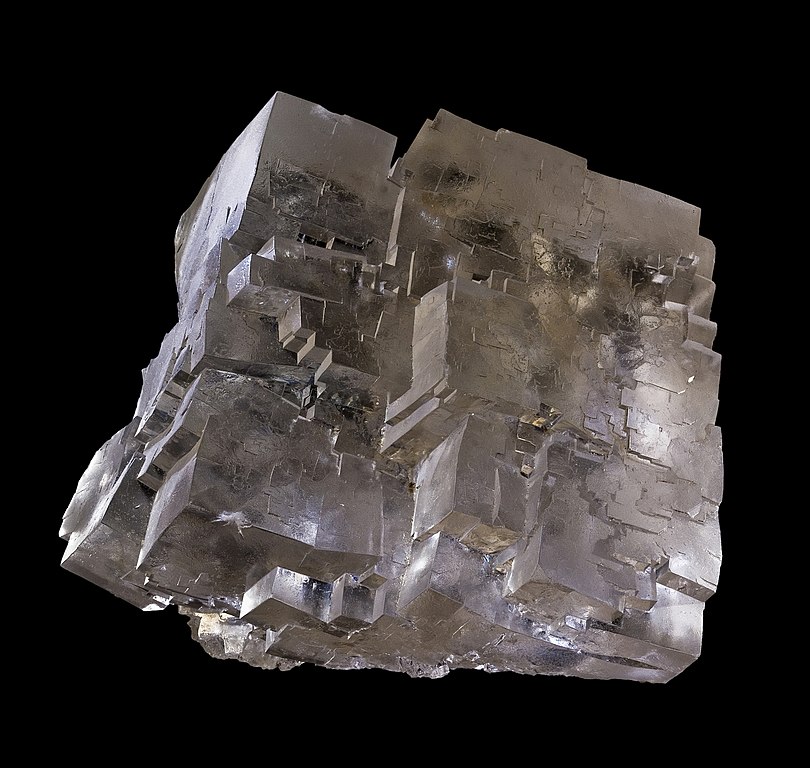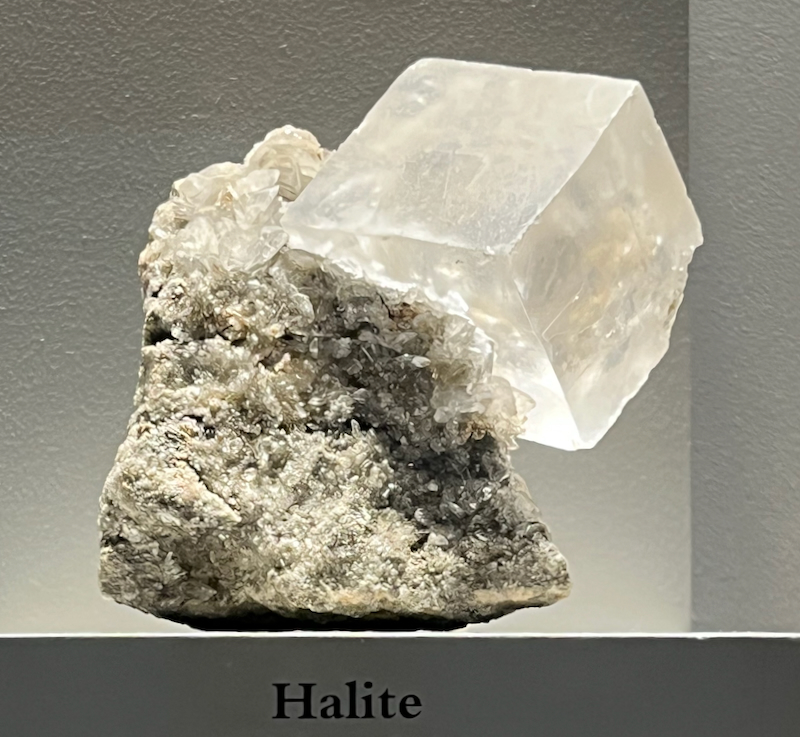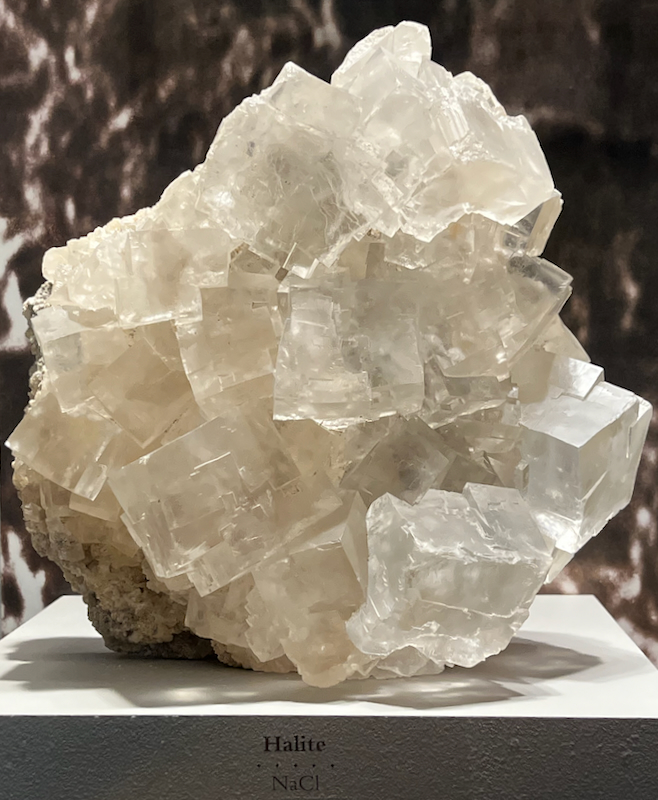Halite
You may not know this, but your entire life, you’ve probably been eating halite every day. What do most people eat every day? Cereal? Energy bars? Gummy bears? Well, halite isn’t so much what you eat but what you put on what you eat. Its formula is NaCl (Na is sodium and Cl is chloride), and that happens to also be the formula for salt. You can eat salt as a flavoring for your food, but you can also collect it as a mineral. But be careful. When you stir salt into water, what happens? It dissolves, leaving you with salty-tasting water. So although halite can form cool cube-shaped crystals that are worth collecting, make sure you don’t try to wash them, or you’ll quickly have one less crystal in your collection! Halite comes from places where salty water evaporates (dries out), such as the Great Salt Lake, the Salton Sea, the Dead Sea, near oceans, in salt caverns, etc. Also known as rock salt, halite is used to melt ice, such as ice on the sidewalk if you live somewhere where the temperature goes below freezing. Halite is normally colorless, but you’ve likely seen pink salt from the Himalayas or other colored salt, and that color can come from other minerals included in the halite or from the crystal structure of the halite itself.
| Formula | Group or Type | Shape | Hardness | Specific Gravity | Streak | Luster |
|---|---|---|---|---|---|---|
| NaCl | — | Isometric | 2.5 | 2 | White | Vitreous to waxy |


